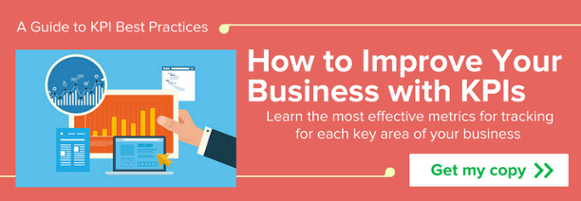What Are the WORST KPIs to Track for Your Business?
Most readers probably know what key performance indicators (KPIs) are by now, but just in case: KPIs are performance metrics that you can use to measure the performance of an employee, a team, or a business as a whole. Using KPI tracking, companies can benchmark their performance and progress towards important business goals.
KPI tracking can be invaluable for identifying your biggest opportunities for improvement, motivating employees, and driving long-term success for the business. However, that’s only if you’re tracking the right business KPIs. Relying on poorly-chosen key performance indicators can cause more harm than good.
One question that some business managers and owners have about KPIs is: “What are the worst KPIs to track for my company?”
There are a lot of bad KPIs out there that, if used, can actually have a negative effect on employee engagement and overall business performance. Here’s a short list of some of the worst KPIs to track by type, which can help you spot a bad KPI in general. When reviewing this list, it’s important to remember that not all KPIs are equally good or bad for all businesses—some KPIs might work for one company but not another because of inherent differences in how the two operate and what their goals are.
Worst KPIs to track: KPIs that are too easy to manipulate
Most people want to have their performance recognized and KPI tracking makes for an easy way to get recognition. However, when a KPI is too easy to manipulate, it can lead to people abusing the KPI to artificially inflate their performance.
For example, say your business has a call center that dials out to people to make cold sales calls or to follow up with customers who recently made a major purchase. One employee performance metric such a call center might track could be their number of outgoing calls. While this sounds like a good way to track call center activity, it may lead to some employees trying to inflate their numbers by making quick “dial and drop” calls that would never make an actual impact on the business’ goals.
This scenario can be mitigated somewhat by tracking related employee KPIs for call centers, such as average time spent on the phone, successful close rate, and revenue per deal. Using these secondary employee performance indicators can help contextualize even a “bad” KPI that could be easily manipulated on its own.
Worst KPIs to track: KPIs that are too vague
Every KPI used in a business should have an objectively measurable value to go with it. If an employee performance indicator is too vague, employee engagement can easily suffer as your people struggle to meet their goals.
For example, say your business had a KPI along the lines of “make the workplace neater” or something else similarly vague. In this instance, employees might clean up their desks and make their workspaces nicer, but still fall short of the goal because there’s no measurable standard. Worse yet, because the criteria for meeting or missing the goal is purely subjective, there’s the risk that some employees might see the evaluation as discriminatory, leading to reduced employee engagement and a whole mess of other problems.
Instead, it’s better to set employee performance metrics that have a specific and measurable outcome that creates a clear pass or fail assessment that everyone can understand. This makes KPI tracking easier and more effective in the long run.
Worst KPIs to track: KPIs that aren’t relevant to your business or industry
Tracking business KPIs should never be a waste of time and effort. In most cases, even a “bad” KPI can at least provide some type of insight into your business operations, even when the data isn’t super useful—though it’s better to focus on better performance metrics whenever possible. However, one of the worst KPI tracking mistakes that a business can make is tracking metrics that aren’t relevant to its operations or industry.
This is a mistake that can be easier to make than you might assume. For example, a team leader may accidentally add a KPI to a list without noticing, or decide they want to test out a metric, only to forget about it later. When you’re tracking numerous data sources across multiple dashboards, it’s easy for an irrelevant KPI to slip through the proverbial cracks.
One or two of these won’t do much to slow operations. But, over time, they can lead to unnecessary data bloat that makes it harder to track your most important business KPIs.
The best solution is to periodically check your KPI lists to identify irrelevant employee performance metrics and remove them.
How can I spot bad KPIs?
When you’re creating or cleaning your KPI lists, it can help to ask yourself the following questions:
- Is the KPI relevant to my team or business’ goals?
- Is the KPI necessary for some kind of regulatory compliance standard?
- Do my employees have any control over the employee performance metric?
- Can I easily measure the KPI?
- Could the KPI be easily abused to twist performance evaluations?
- Does the KPI establish a specific and easy to understand performance goal?
- Does this business metric indicate what I really want to know better than other related KPIs?
- Can I set goals with this KPI that can be met in a reasonable amount of time?
If the answer to most of these questions is “yes,” then odds are it’s a good KPI. If the answer to all of these questions is “no,” then you may want to reconsider using that performance metric.
Need help optimizing and tracking your KPIs to improve employee motivation, engagement, and productivity? Reach out to the BrightGauge team today to learn more!
Free MSA Template
Whether you’re planning your first managed services agreement, or you’re ready to overhaul your existing version, we've got you covered!



